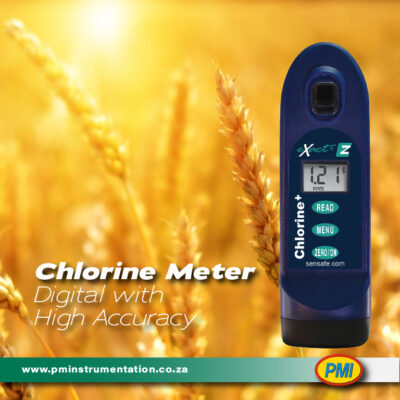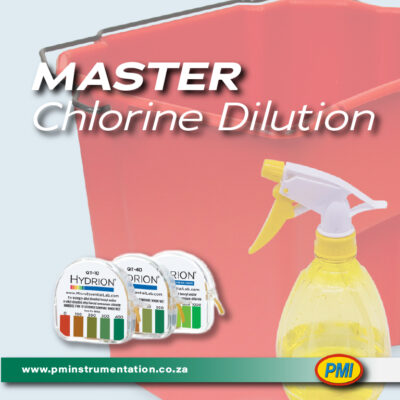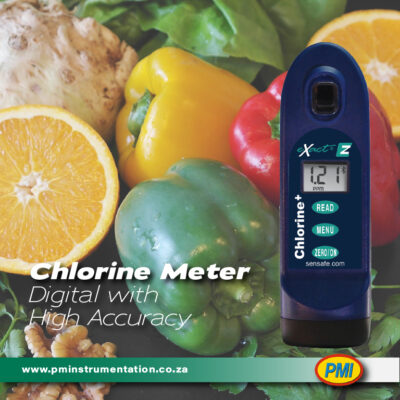Audit, Test Strips, Safety, Information
Sanitizing vs Disinfecting
When it comes to cleaning, the words sanitize and disinfect are often used interchangeably. But there’s a definite difference between the two terms. Knowing the difference between sanitizing, sterilizing, and disinfecting can help you to know exactly what cleaning products to buy, and how to use them to keep your food environment safe.
Where are germs found?
Bacteria are a part of everyday life. Some of them are helpful, but others are harmful and cause disease. They can be found everywhere – in our air, soil, and water. They are on our skin and in our bodies. Bacteria are also on the surfaces and objects that we touch. Sometimes the bacteria can spread and make your clients.
How can I avoid getting germs from surfaces and objects?
To avoid becoming infected by germs from surfaces and objects, it is important to wash your hands often. But you can’t wash your hands every time you touch something. So, it’s also important to regularly clean and disinfect surfaces and objects.
Cleaning refers to removing dirt and other impurities from surfaces.
Sanitizing, disinfecting, and sterilizing all go far beyond this level to eliminate harmful bacteria. Understanding the difference between these deep cleaning terms helps to use cleaning products safely and effectively.
Sanitizing refers to lowering the number of bacteria on a surface to a safe level and cleaning the surface area.
Disinfecting doesn’t clean surfaces; it is the use of chemicals to kill bacteria on surfaces and objects.
Sterilizing refers to a surface that is completely free of living microorganisms and viruses. Sterilization procedures kill all microorganisms.
On surfaces, sanitiser must be at the correct dilution to reduce the number of bacteria to at least 99.99%. A disinfectant aims to kill almost 100% of bacteria present on the surface.

When to Sanitize
It’s best to sanitize surfaces that don’t normally come into contact with dangerous bacteria or those that are best cleaned without powerful chemicals. For example, cooking tools or children’s toys would be best for sanitization, as you don’t want those coming into contact with powerful chemicals.
What Is Considered a Sanitizer?
In order to be considered a sanitizer, a product must reduce bacteria on a surface by at least 99.9 percent. A simple water and bleach solution can be a sanitizer or a disinfectant, depending on the concentration of bleach in the solution. Solutions with higher concentrations of bleach will be a disinfectant, while lower concentrations are more likely to be a sanitizer.
When to Disinfect
Unlike sanitizing, disinfecting won’t be a super common part of your cleaning routine. It’s really meant for serious messes like those involving bodily fluids, making it more common in medical settings.
What does it mean for your household cleaning? You’ll likely want to disinfect things like toilets or sinks that can come into contact with dangerous bacteria. You’ll also want to disinfect high-touch areas like door knobs and faucets. Overuse of disinfectants can lead to harmful health and environmental consequences.

What Is Considered a Disinfectant?
A disinfectant must kill 99.999 percent of germs, compared to 99.9 percent for sanitizers. While this difference might seem minimal, it can make a huge difference in reducing the spread of infection.
Is Bleach a Sanitizer or Disinfectant?
Bleach can be used as a disinfectant or a sanitizer, depending on how concentrated the bleach solution is. It all comes down to how much it’s diluted. Its active ingredient, sodium hypochlorite, is effective in killing bacteria, fungus, and viruses. Refer to the instructions on the packaging for how to dilute bleach. And remember, never mix bleach with ammonia or any other cleaner.
And What About Sterilizing?
Sterilization is an entirely different beast, and it’s not something the average person will need to do in their home. According to the CDC, sterilization is the process of destroying or eliminating all forms of microbial life.
It’s often carried out in healthcare facilities using physical or chemical methods including steam under pressure, dry heat, EtO gas, hydrogen peroxide gas plasma, and liquid chemicals. These extreme forms of decontamination are necessary for things like surgery, or in certain environments like laboratories or hospitals.
The main difference between the two is disinfection is the process of eliminating all harmful microorganisms, while sterilization is the process of killing all microorganisms.

Which surfaces and objects do I need to clean and disinfect?
To prevent the spread of bacteria, you should regularly clean and disinfect surfaces and objects that are touched often. For example, in your kitchen, this would include countertops, chopping boards, doorknobs, faucets, basins, handles, and light switches.
How can I safely clean and disinfect?
It’s important to be safe when using cleaning and disinfecting products:
- Store them in the containers they came in. Always follow the instructions and pay attention to the warnings on the label.
- Do not mix cleaners and disinfectants unless the labels say that it is safe to do so. Combining certain products (such as chlorine bleach and ammonia cleaners) can cause serious injury or even death.
- Check the label to see whether you need to use gloves to protect your hands and/or eye protection when using the products
- If you swallow, inhale, or get them on your skin, follow the directions on the label or get medical help
- Store them out of the reach of children
To test your disinfectant you can use either test strips or a chlorine meter.

